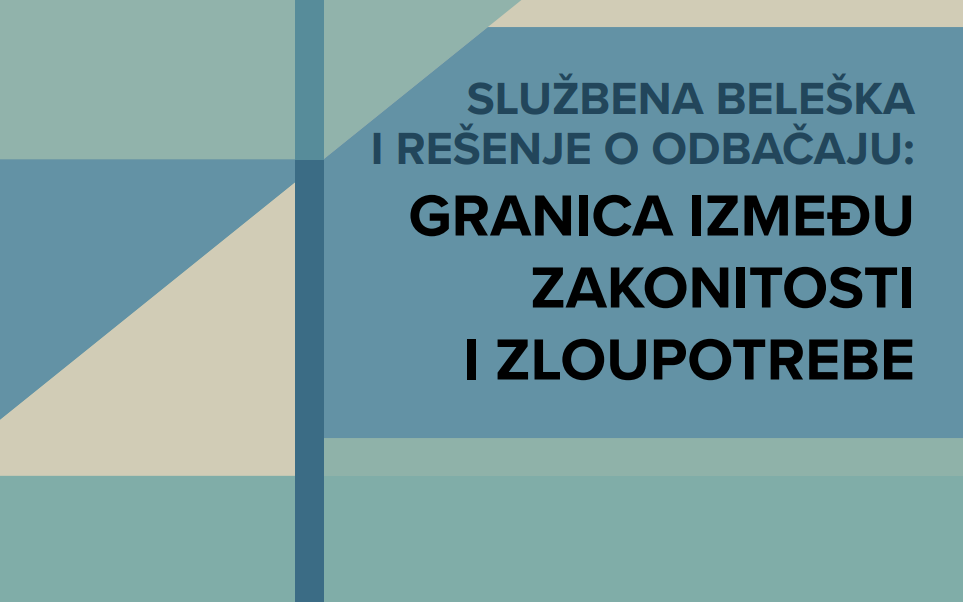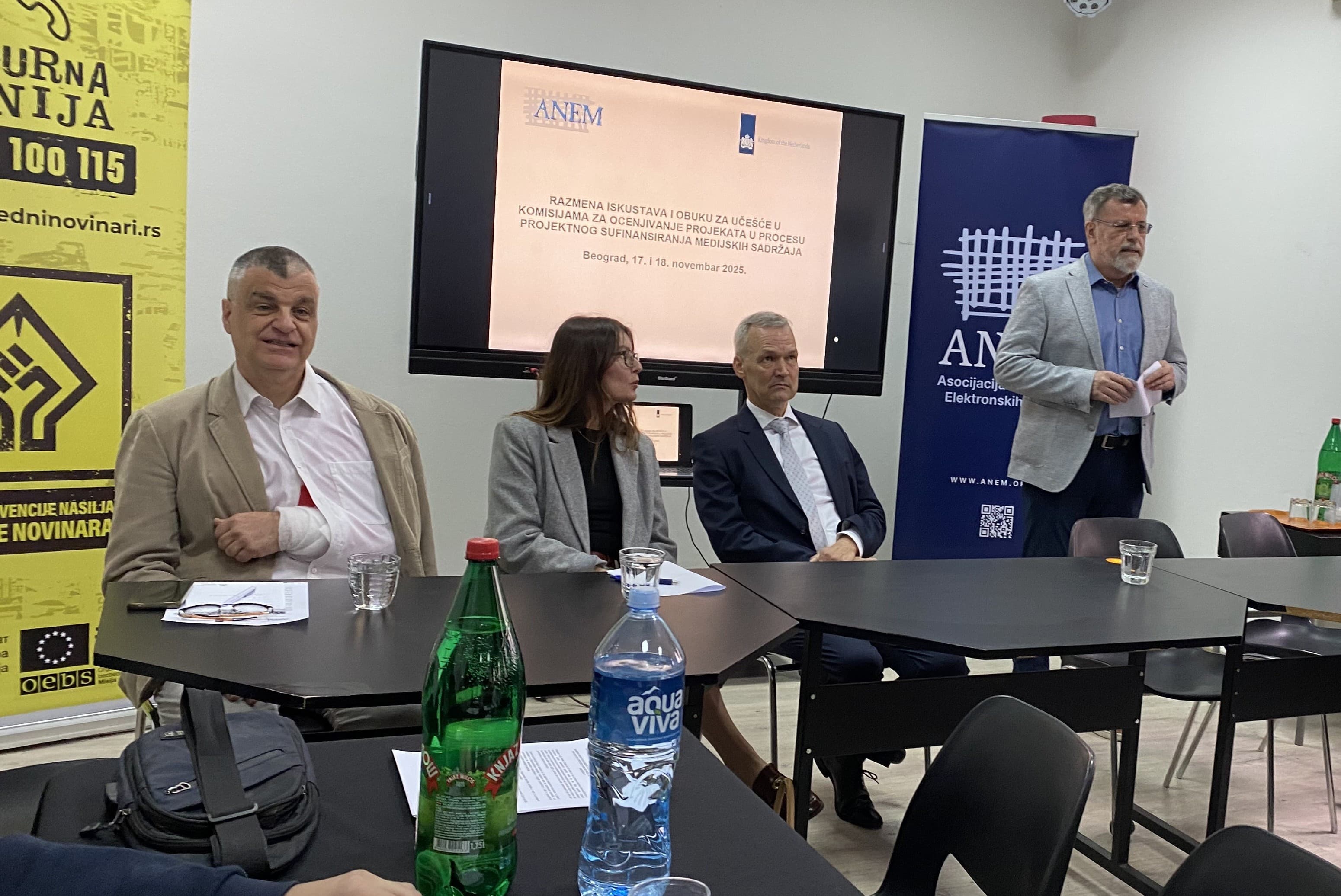Can we commemorate the victims of past crimes while simultaneously turning a blind eye to the crimes against journalists in the present? This is a crucial question. Our future depends on the answer to it. On that hot August morning, August 21, 1998, journalists from Radio Priština, Đuro Slavuj from Dvor na Uni, and Ranko Perenić from Lipljan, went to the Monastery of the Holy Healers in Zočište, in western Kosovo, to report on the return of the kidnapped monks. Since then, there has been no trace of them.

It was a wartime period, and the news spread like a dreadful premonition among all the journalists in the field.
What was a terrible suspicion 27 years ago is now an undeniable fact.
As soon as he learned what had happened, the then-editor of Radio Priština and head of the Media Center, Milivoje Mihajlović, launched a search. At his request, Mike O’Connor from The New York Times joined the effort. The esteemed American journalist returned from a village near Orahovac with crucial information – he had seen a car with a dictaphone inside. It was the car of the two missing journalists, and the serial number of the dictaphone matched the one they had taken to the field.
However, official investigations, if there were any at all, never found even that car. It was as if that blue “Zastava 128,” once a bulky symbol of the former Yugoslavia, had evaporated into thin air.
Mihajlović also sought help from Kati Marton, then-president of the Committee to Protect Journalists (CPJ) and the wife of American diplomat Richard Holbrooke.
“When we were surveying the area, we contacted soldiers of the KLA, and through them, the commanders. We always asked them about the missing Radio Priština crew, but we never received a satisfactory answer,” said Sean Burns, former head of the American observation mission in Kosovo (KDOM).
The fight against impunity continues
After the war, the responsibility for investigations was taken over by international missions – first UNMIK, and then EULEX.
In this case, as well as in 15 other cases of murdered and missing journalists in Kosovo from 1998 to 2005, the perpetrators have never been identified, nor has any information about the fate of the abducted journalists, whether Albanians or Serbs, been revealed.
Only in one case was there a proceeding, and that was within a broader process before the International Criminal Tribunal for the former Yugoslavia (ICTY).
International missions, states, and governments have completely failed. They did not protect journalists, did not ensure their safety, nor did they uncover their fates or punish the criminals.
The struggle of journalists and their appeals for truth and justice have been swallowed by the dark tunnel of political power, which dictates the rules and outcomes. Sounds familiar?
The European Federation of Journalists (EFJ) has adopted three resolutions calling for investigations into these crimes, demanding the establishment of an International Commission of Experts. The resolutions were passed at annual meetings in Lisbon (2018), Zagreb (2021), and Priština (2024) – but have gone unheard.
In 2021, on the Day Against Impunity, the International Federation of Journalists (IFJ) sent a letter to Kosovo Prime Minister Albin Kurti, demanding urgent investigations and accountability. There was no response.
Is it necessary to say that nothing has been done?
“My Ranko has disappeared. He got dressed and went to work, and I have been searching for him ever since. I want this agony to end, to know where he is, and to light a candle for him.”
This repeated cry from Snežana Perenić, the wife of Ranko Perenić, resonates in the abyss of sorrow for a family.
Demanding justice, since 2012, the Association of Journalists of Serbia (UNS) has placed a memorial plaque near Orahovac, between Zočišta and Velika Hoča, at the site where their colleagues were abducted. The plaque, in Serbian and Albanian, reads: “Here on August 21, 1998, our journalists were abducted. We are searching for them.”
The plaque has been removed and destroyed eight times by unknown individuals. It still stands today.
At that location, every year, Snežana Perenić holds Matija's hand and repeats: “I am looking for him.” Matija has never met his grandfather. For him, it is a visit to a place where he encounters journalists, colleagues who share precious stories about grandfather Ranko.
Are memories all that remains for us to keep alive?
“It is true that so much time has passed that anyone could say: It is time to give up, because there is no hope. However, two innocent victims have disappeared, two professionals, two men who have become symbols of the slain journalists, and in them, their fate, seventeen murdered and abducted colleagues are included. There is hope, because a person cannot simply disappear, and thus the need for justice cannot vanish, and it will remain as long as we exist and as long as this profession exists,” emphasizes Živojin Rakočević, president of the Association of Journalists of Serbia (UNS).
In today's Serbia – journalists face a wave of violence
Today, in Serbia, Aleksandar Vučić, who was the Minister of Information during the infamous Milošević regime, now rules with an authoritarian fist as president.
His Serbian Progressive Party (SNS), along with his thugs, the police, the regime's prosecution, and judiciary, have raised the level of violence against journalists and independent media to the point where there is an all-encompassing fear that the worst is yet to come.
While Vučić targets journalists who report ethically as terrorists, foreign mercenaries, and “anti-Serbs,” he is the one inciting violence and terror.
Since the beginning of the year, journalists' and media organizations have recorded over 220 attacks on journalists, including physical assaults and serious death threats, which escalated in August. The police no longer protect journalists but attack them. Recently, out of 10 attacks, 6 were carried out by the police.
“Journalists today are fighting for the basic tenets of the profession, but also for survival,” says Veran Matić, president of the Commission for the Investigation of Murders of Journalists in Serbia, emphasizing:
“Violence against journalists is growing daily. And in such conditions, we must continue to seek the truth about our abducted colleagues. We must ask institutions why there are no investigations and results. As long as we remind the public of their terrible fate, there is a chance that someone will begin to do their job, that their conscience will awaken, and that they will take responsibility. Impunity is unacceptable – for our colleagues and their families.”
Journalistic genocide continues in Gaza
Samy Abu Salem, a prominent journalist from Gaza and a security instructor at the IFJ, answered my phone call knowing he could be killed at any moment:
“Maybe while I’m talking to you right now, I could be killed. I don’t know. I believe I’m not a target as a person, but as a journalist.”
He was tired, hungry.
Today, perhaps more than ever, we as journalists are facing live tragedy in Gaza, “journalistic genocide” as described by the IFJ, with at least 226 journalists and media workers killed since October 7, 2023, dozens injured, as well as missing. All cards are on the table.
And as the sound of crying remains a reverberation echoing off the walls of political inhumanity, the number of journalists killed in Gaza has doubled. A year ago, there were 124 journalists and media workers killed.
While scrolling through scenes of death and blood on our screens, we are witnessing the murder not just of journalists, but of the very profession itself. The war against journalism is being waged by governments that claim in the United Nations to protect media freedom and the safety of journalists, yet are in reality willing to settle for the opposite.
To save their lives, journalists in Gaza rise every day, hungry, thirsty, without the privilege to mourn for their friends and family members. We have failed as human beings if we do not do the minimum. We must help stop the terror and do everything in our power to fight against impunity for the murders of journalists, wherever they may occur.
Let’s not deceive ourselves, the “radio silence” surrounding the cases of murdered journalists has long ceased to be a chilling message. It is the sound of a respirator keeping journalism on artificial “life support” as a prelude to the clinical death of our profession.
We must respond. If we care about the integrity and importance of journalism as a profession, we cannot accept that our murdered colleagues disappear without justice. The cases of Slavuj and Perenić are many others.
They must not be forgotten, not only for their families and colleagues, nor solely for professional journalism. If impunity prevails, we lose our integrity and we lose professional journalism.
So, what will we do?
This article was written by investigative journalist Jelena L. Petković. She has long been engaged in the fight against impunity for crimes against journalists and has conducted research on the murders and disappearances of journalists in Kosovo for many years. She has interviewed over 200 interlocutors: relatives, colleagues, acquaintances, and members of international missions, uncovering new information about the disappearances and murders.
Text reproduced from the portal IFJ.
Translation: Jelena L. Petković
Related Articles

"I am not sure what to expect when I go out on the street": Journalist Isidora Kovačević after the court acquitted the man who was posting wanted notices with her image.

NUNS Analysis: Official Notes Instead of Legal Protection – A System That Leaves Journalists Unprotected











